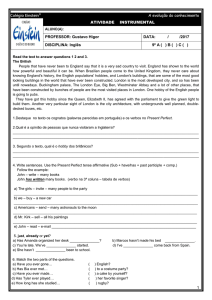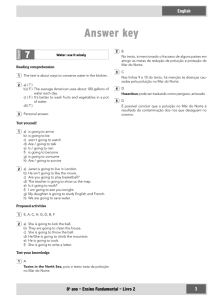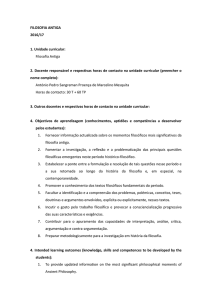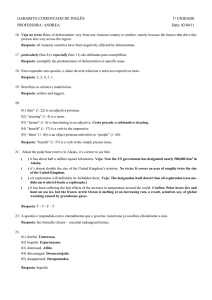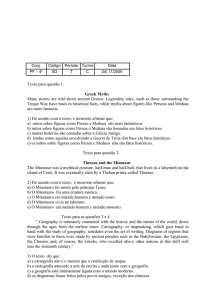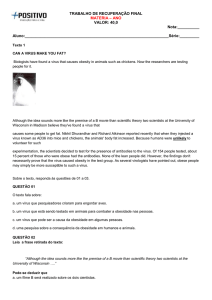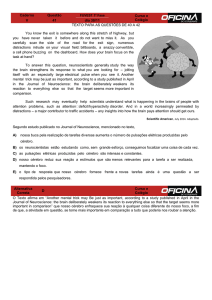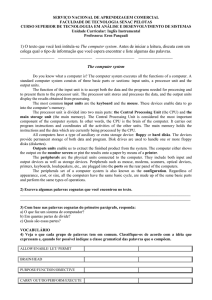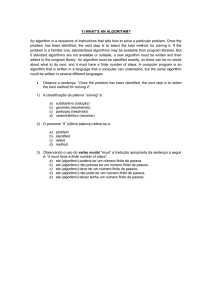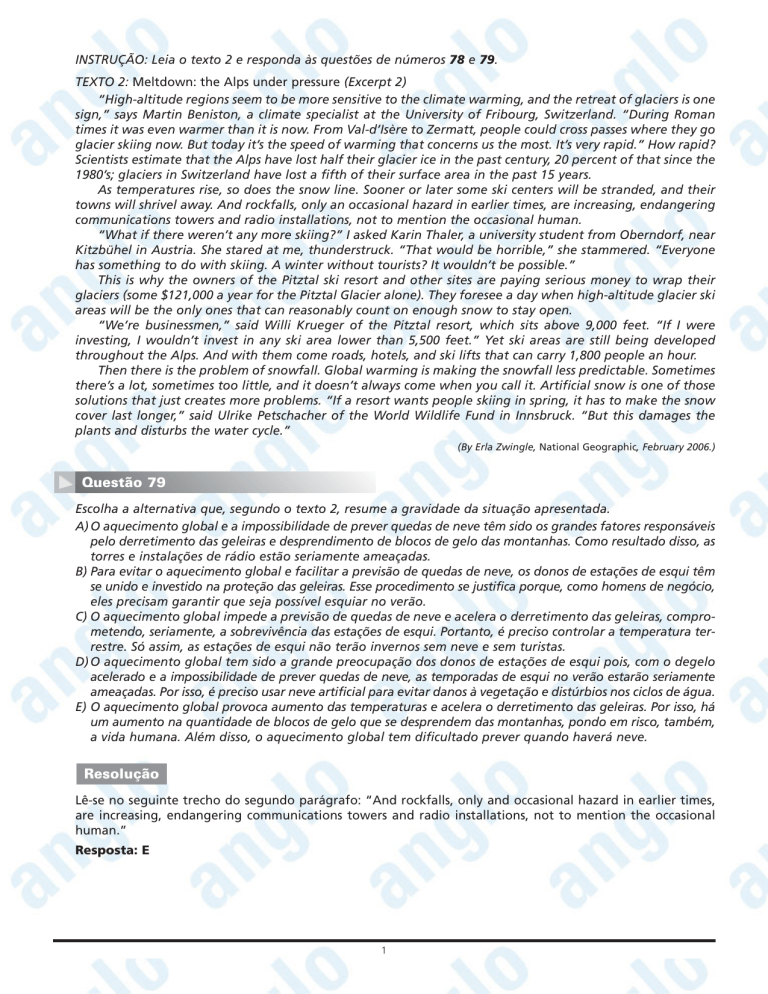
INSTRUÇÃO: Leia o texto 2 e responda às questões de números 78 e 79.
TEXTO 2: Meltdown: the Alps under pressure (Excerpt 2)
“High-altitude regions seem to be more sensitive to the climate warming, and the retreat of glaciers is one
sign,” says Martin Beniston, a climate specialist at the University of Fribourg, Switzerland. “During Roman
times it was even warmer than it is now. From Val-d’Isère to Zermatt, people could cross passes where they go
glacier skiing now. But today it’s the speed of warming that concerns us the most. It’s very rapid.” How rapid?
Scientists estimate that the Alps have lost half their glacier ice in the past century, 20 percent of that since the
1980’s; glaciers in Switzerland have lost a fifth of their surface area in the past 15 years.
As temperatures rise, so does the snow line. Sooner or later some ski centers will be stranded, and their
towns will shrivel away. And rockfalls, only an occasional hazard in earlier times, are increasing, endangering
communications towers and radio installations, not to mention the occasional human.
“What if there weren’t any more skiing?” I asked Karin Thaler, a university student from Oberndorf, near
Kitzbühel in Austria. She stared at me, thunderstruck. “That would be horrible,” she stammered. “Everyone
has something to do with skiing. A winter without tourists? It wouldn’t be possible.”
This is why the owners of the Pitztal ski resort and other sites are paying serious money to wrap their
glaciers (some $121,000 a year for the Pitztal Glacier alone). They foresee a day when high-altitude glacier ski
areas will be the only ones that can reasonably count on enough snow to stay open.
“We’re businessmen,” said Willi Krueger of the Pitztal resort, which sits above 9,000 feet. “If I were
investing, I wouldn’t invest in any ski area lower than 5,500 feet.” Yet ski areas are still being developed
throughout the Alps. And with them come roads, hotels, and ski lifts that can carry 1,800 people an hour.
Then there is the problem of snowfall. Global warming is making the snowfall less predictable. Sometimes
there’s a lot, sometimes too little, and it doesn’t always come when you call it. Artificial snow is one of those
solutions that just creates more problems. “If a resort wants people skiing in spring, it has to make the snow
cover last longer,” said Ulrike Petschacher of the World Wildlife Fund in Innsbruck. “But this damages the
plants and disturbs the water cycle.”
▼
(By Erla Zwingle, National Geographic, February 2006.)
Questão 79
Escolha a alternativa que, segundo o texto 2, resume a gravidade da situação apresentada.
A) O aquecimento global e a impossibilidade de prever quedas de neve têm sido os grandes fatores responsáveis
pelo derretimento das geleiras e desprendimento de blocos de gelo das montanhas. Como resultado disso, as
torres e instalações de rádio estão seriamente ameaçadas.
B) Para evitar o aquecimento global e facilitar a previsão de quedas de neve, os donos de estações de esqui têm
se unido e investido na proteção das geleiras. Esse procedimento se justifica porque, como homens de negócio,
eles precisam garantir que seja possível esquiar no verão.
C) O aquecimento global impede a previsão de quedas de neve e acelera o derretimento das geleiras, comprometendo, seriamente, a sobrevivência das estações de esqui. Portanto, é preciso controlar a temperatura terrestre. Só assim, as estações de esqui não terão invernos sem neve e sem turistas.
D) O aquecimento global tem sido a grande preocupação dos donos de estações de esqui pois, com o degelo
acelerado e a impossibilidade de prever quedas de neve, as temporadas de esqui no verão estarão seriamente
ameaçadas. Por isso, é preciso usar neve artificial para evitar danos à vegetação e distúrbios nos ciclos de água.
E) O aquecimento global provoca aumento das temperaturas e acelera o derretimento das geleiras. Por isso, há
um aumento na quantidade de blocos de gelo que se desprendem das montanhas, pondo em risco, também,
a vida humana. Além disso, o aquecimento global tem dificultado prever quando haverá neve.
Resolução
Lê-se no seguinte trecho do segundo parágrafo: “And rockfalls, only and occasional hazard in earlier times,
are increasing, endangering communications towers and radio installations, not to mention the occasional
human.”
Resposta: E
1


